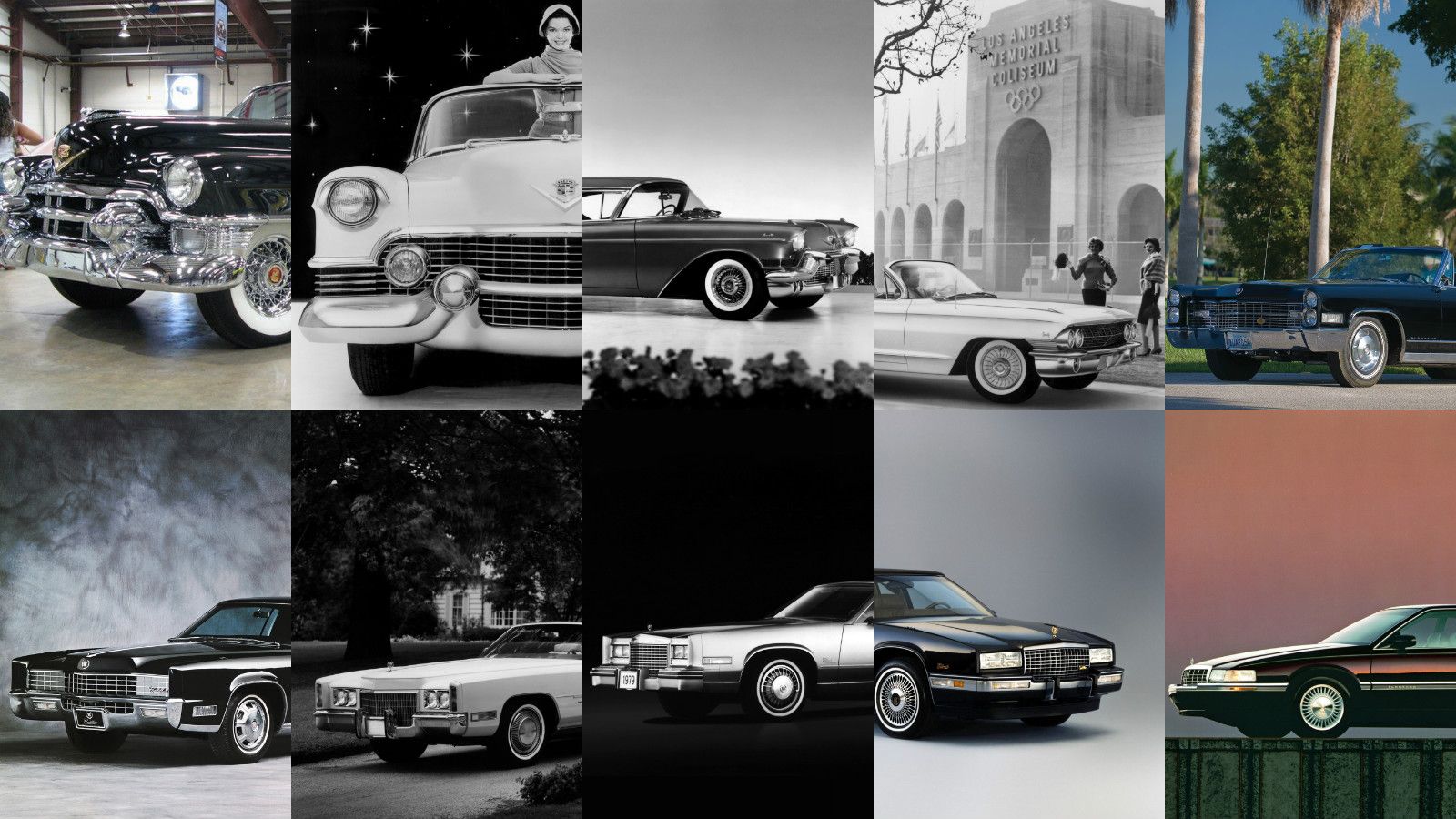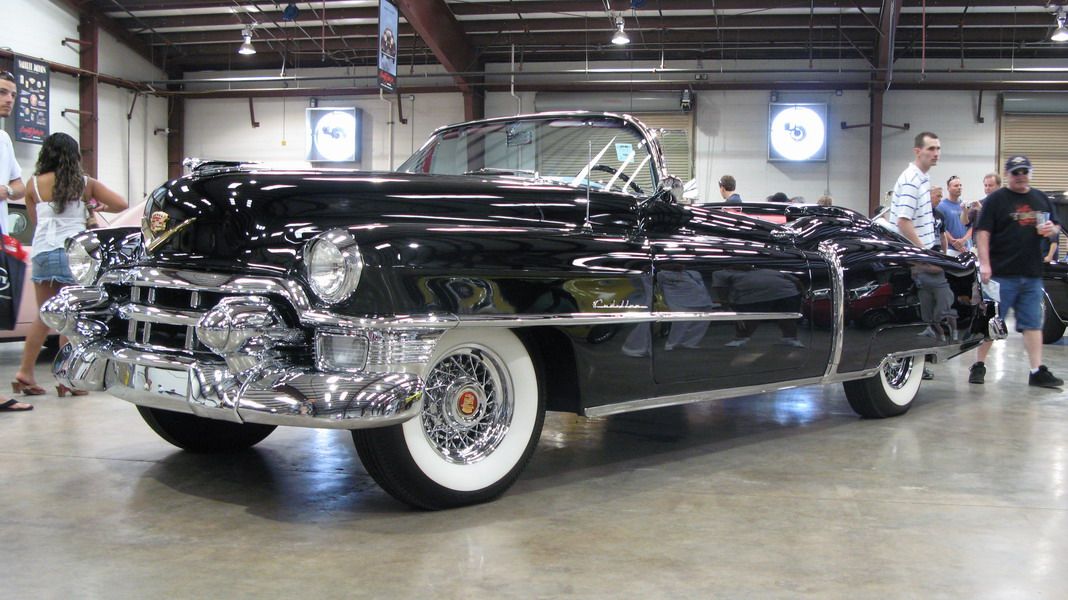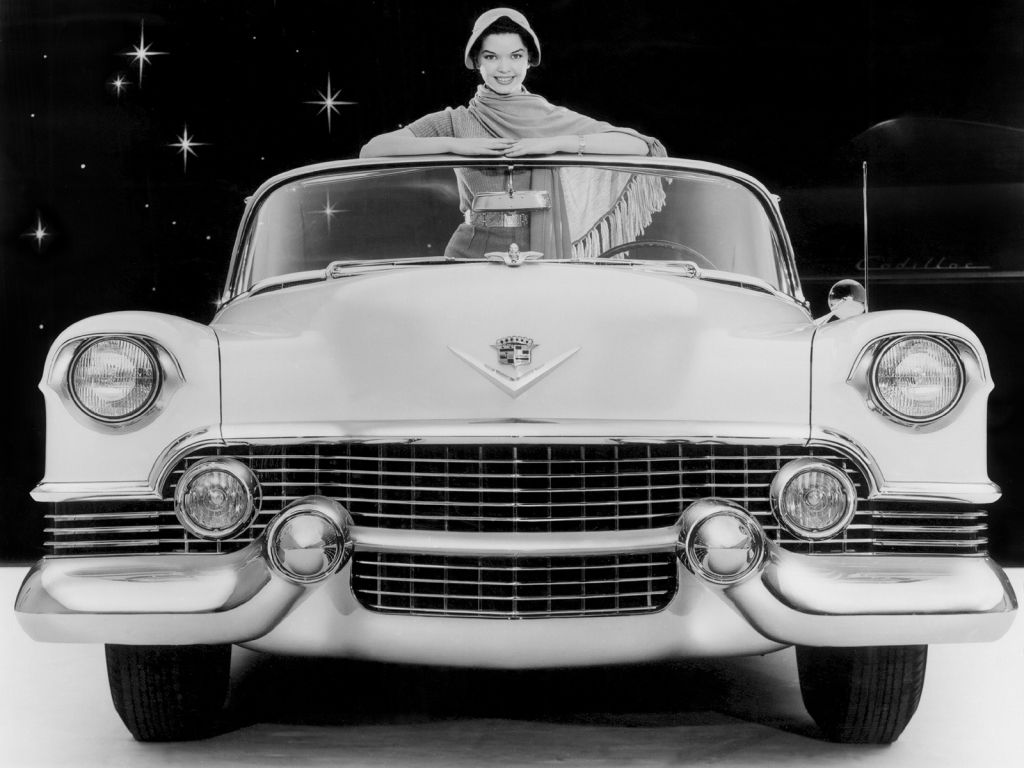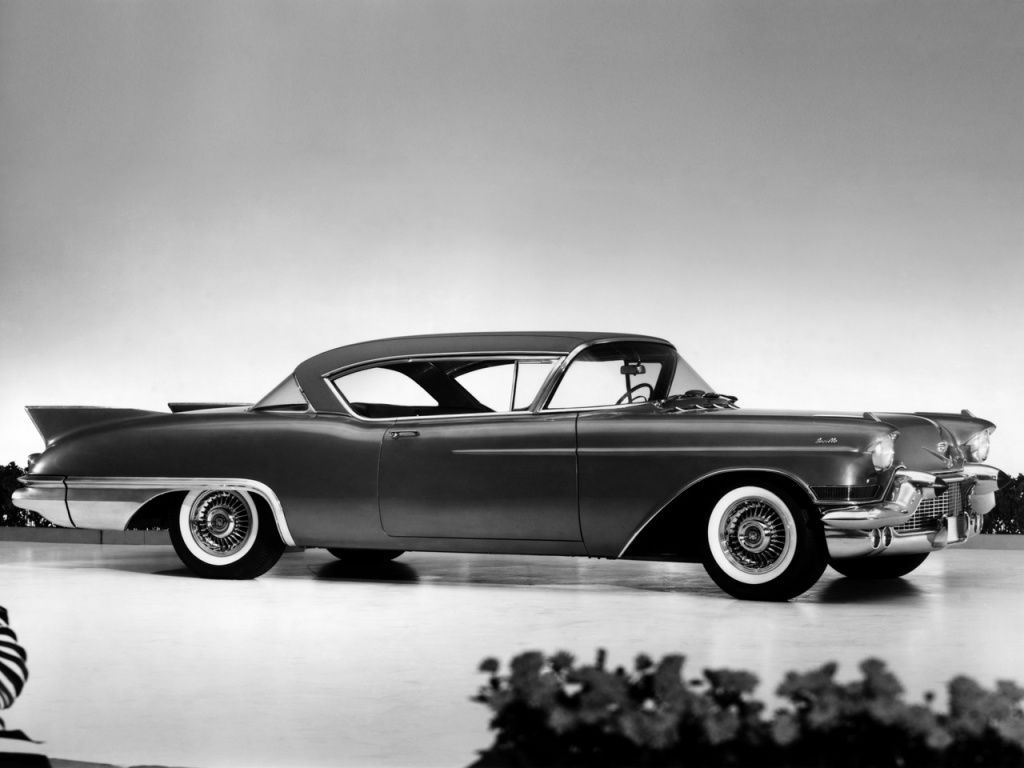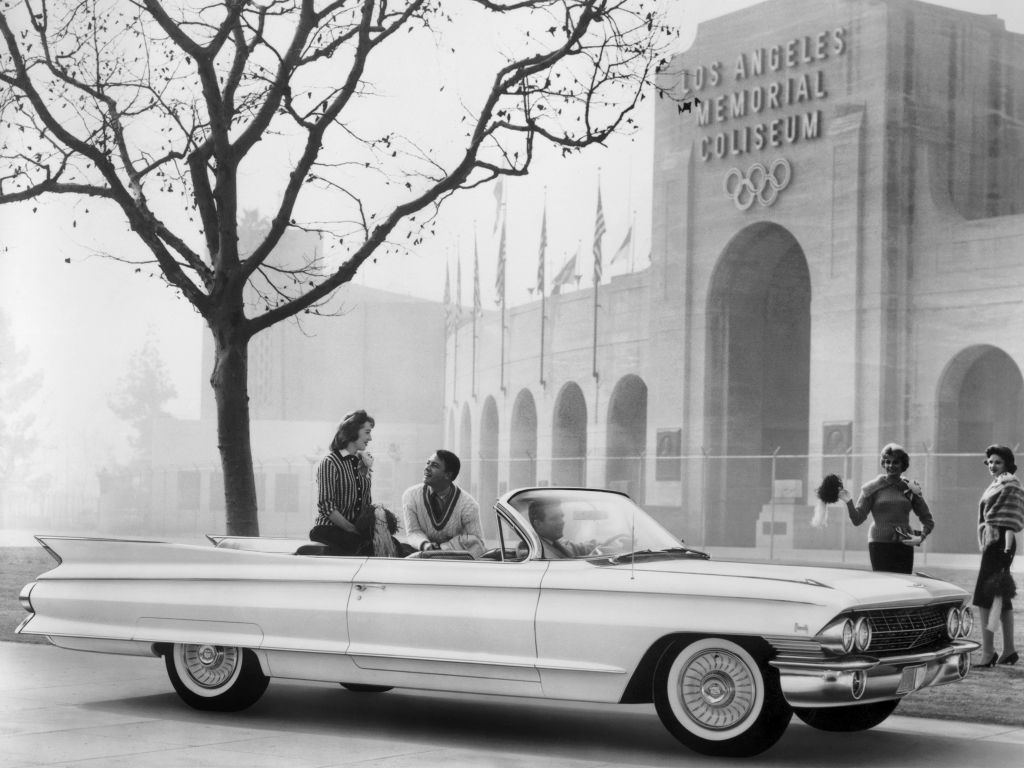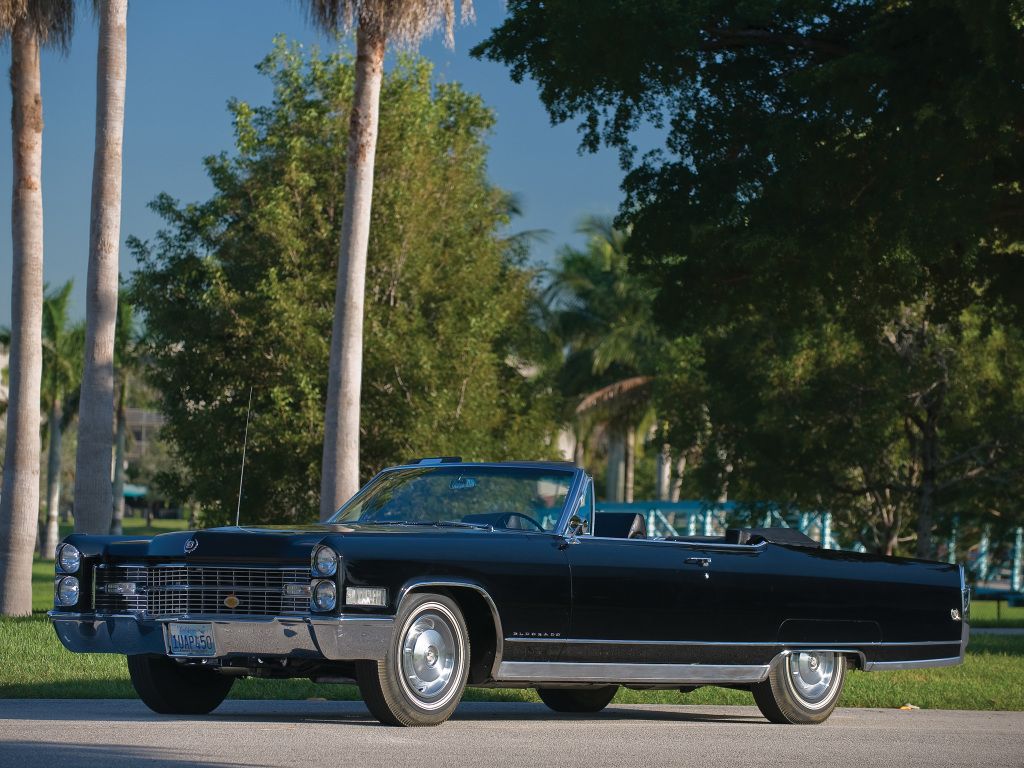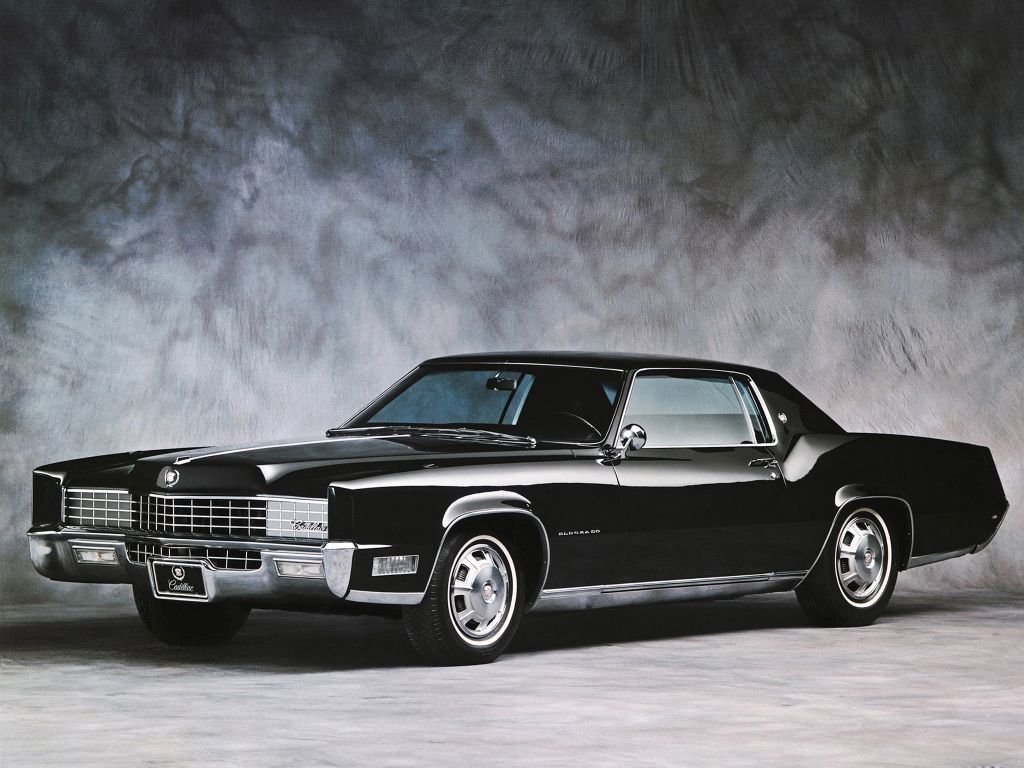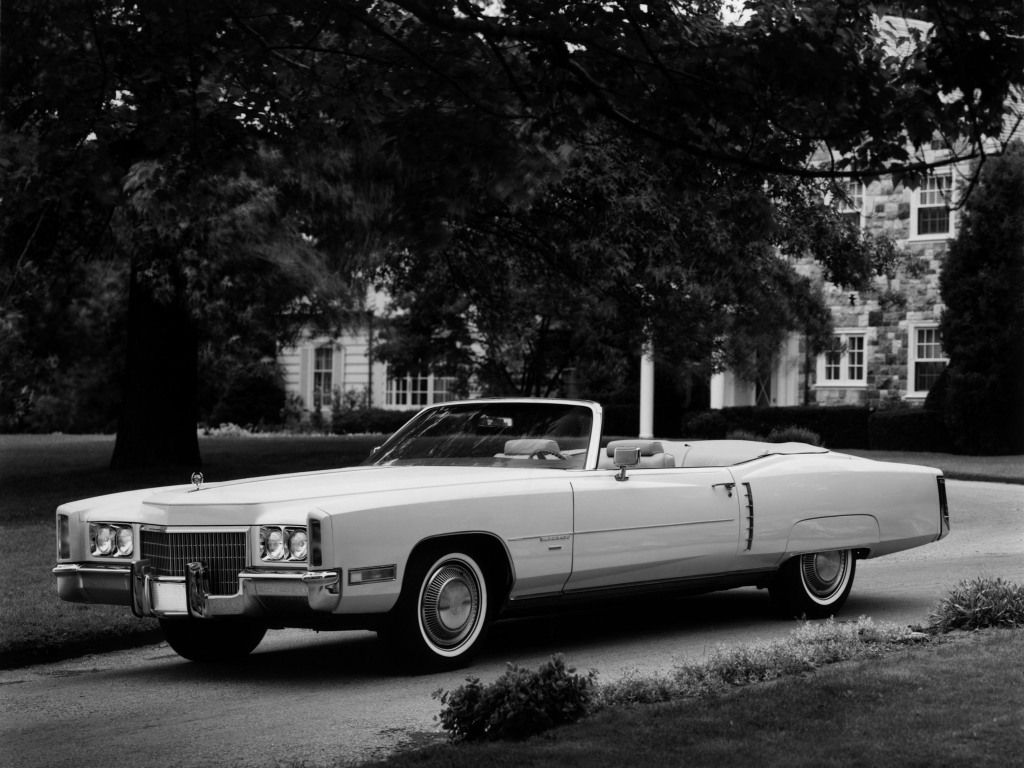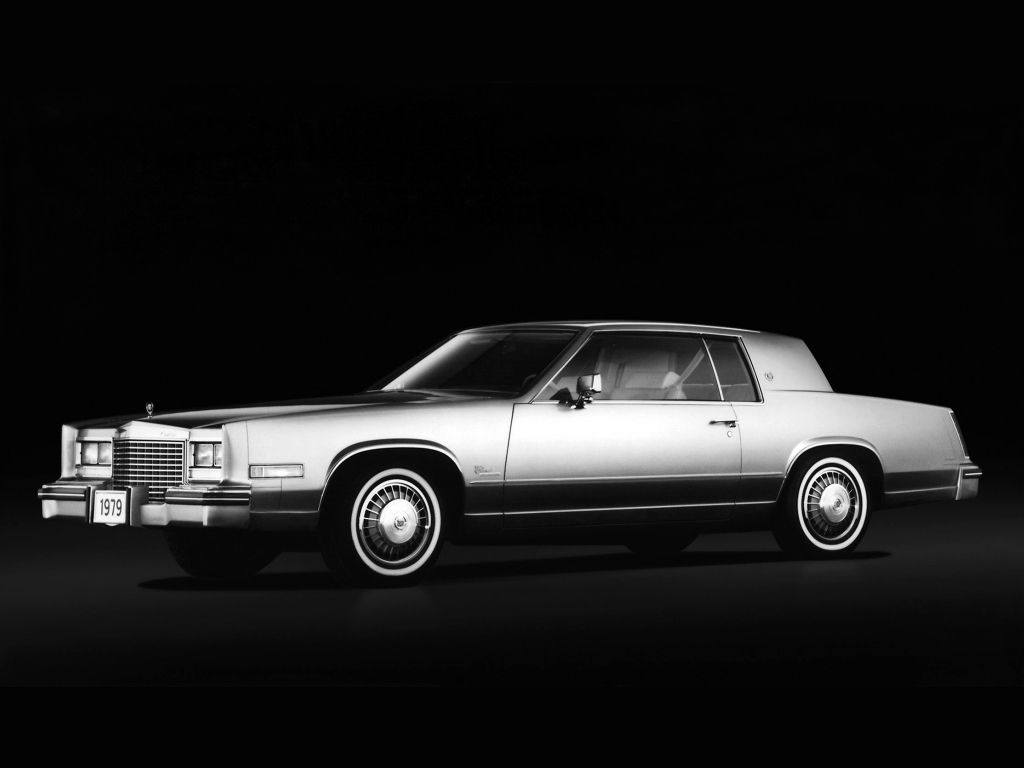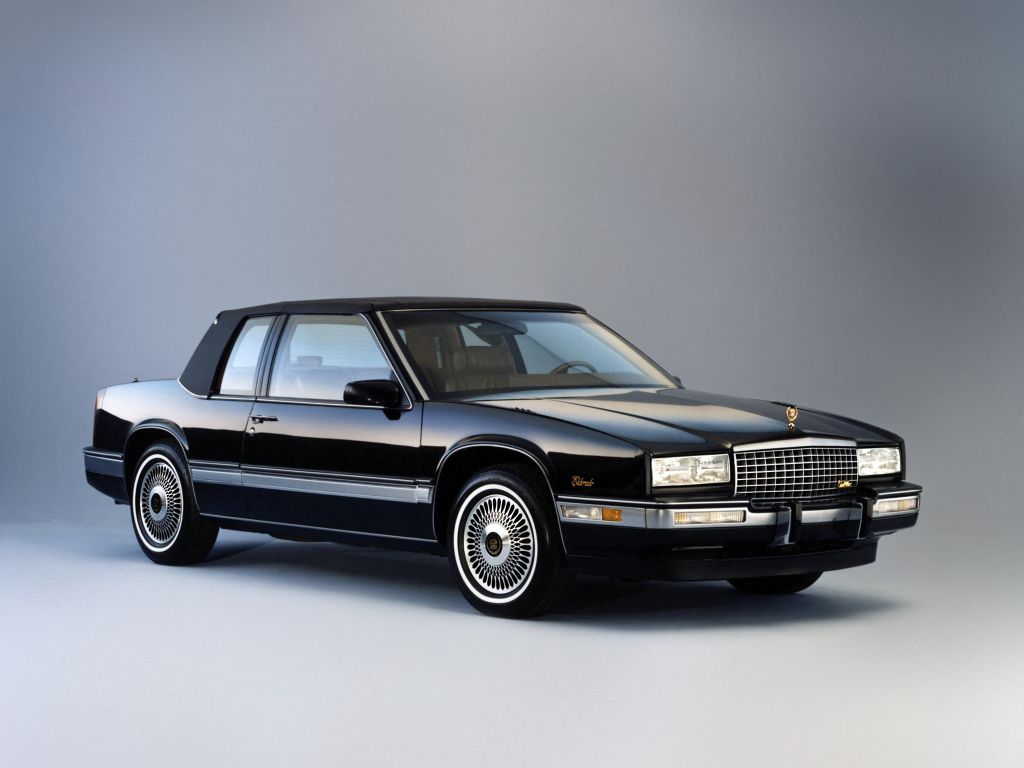The “personal luxury vehicle” is an idea that many U.S. automakers have tried to make work over the years, with varying levels of success. The idea was a coupe or convertible meant more for luxury than outright speed, a bit like a grand tourer but with more of an American flavor. Many of these models tanked even before European grand tourers were readily available and well-known in this country. Only a couple of cars managed to make it work, and one stayed stay alive for 10 generations spanning 50 years. That car was the Cadillac Eldorado->ke2068, and it remains one of the best loved classic Cadillacs->ke18.
The Eldorado started off as a concept car->ke169 in 1952, to mark Cadillac's 50th anniversary. This being the golden anniversary, the name Eldorado (the name of a mythical city of gold that the Spanish were searching for in South America) was chosen. The idea specifically came from Mary-Ann Marini, a secretary at GM's->ke1024 marketing department. The car was a flagship vehicle for many of the years that it was produced, and it was always used as a way for Cadillac's designers to try out new and bolder styling ideas.
Continue reading for the full story.
First Generation
After the concept was shown in 1952, there was a sufficient amount of interest in the idea of a production version of the car that Cadillac made a limited production run for 1953. In fact, it was a very limited production; just 532 units were produced of the first generation of the car, which was built only for 1953. Cadillac was able to justify the expense of such a limited production because this first generation of the car wasn't an entirely separate model, but was based on the Series 62 convertible. It was nonetheless a unique styling statement, the first Cadillac to have a wraparound windshield, for example.
It also cost quite a lot more than the Series 62. At $7,750 (nearly $70,000 in today's money) it cost more than double the price of the car it was based on, and nearly $2,000 more than the next most expensive model in the Cadillac lineup, the Fleetwood 75 Imperial limousine. But nearly everything in the Cadillac option book came standard on the first-gen Eldorados, although two notable exceptions were air conditioning and wire wheels. The engine was the same as that of the Series 62 (and actually all Cadillacs in 1953) -- a 331-cubic-inch (5.4-liter) V-8 that produced 210 horsepower. The Eldorado carried no special badging, save for a gold name plaque in the center of the dash.
Second Generation
This is when the Eldorado really came into its own. For 1954, the Eldorado became its own model, with more mainstream (though still very expensive) prices and production. That new price was $5,875, so it still cost as much as the limousine. Although the Eldorado was now a separate model, the styling was actually pretty much the same as the rest of the Cadillac lineup. It was mostly trim pieces that distinguished the car from other Cadillacs. Over the course of the second generation, styling tweaks would come to separate the Eldorado more and more from the other models.
New styling touches came in 1955, with “saber spoke” wheels and a whole different rear end. The Eldorado was given pointier tail fins than the rest of the Cadillac lineup, with its rounded fins. The engine also got a second four-barrel carburetor, bringing horsepower up to 270, 20 more than any other Cadillac model. The following year saw new engines for the whole Cadillac lineup, and the Eldorado now had a 365-cubic-inch engine that made 305 horsepower, again 20 more than the rest of the lineup. A hardtop was offered for the first time in 1956, and the car got a new twin hood ornament and fender badging for the first time.
Third Generation
It was in 1957 that things got really complicated. Two different versions of Eldorado were offered for this generation of the car; one based on the Series 62 and one based on the Series 70, with the latter being known as the Eldorado Brougham. The Series 70 was the bigger of the two, but the easiest way to tell them apart was the Brougham's quad headlight design. The two cars were entirely different sorts of machines, and were the same only in name the styling of the rear end. The Eldorado Brougham was a big hardtop four-door with rear suicide doors and every possibly amenity, such as self-leveling air suspension and two-position power seats.
It cost a whopping $13,074, double that of the Series 62 Eldorado and more than a Rolls-Royce Silver Cloud. Still, Cadillac did manage to sell 400 of them in 1957. The two versions of the car did share the same engine, but the Series 62 had the regular 300-horsepower version that was standard in all Cadillacs, and the Series 70 had a 325-horsepower version with dual four-barrel carburetors. The dual-quad setup was offered as an option for the Series 62 though, but wasn't for other Cadillac models.
1959 saw a facelift of the styling, and is generally thought to be the most iconic of all Edorados. This is largely because of the gigantic tail fins, each with a twin-bullet taillight. It is truly a symbol of the automotive excess of the time. But this kind of excess immediately became unpopular due to an economic downturn during 1959, and Cadillac scrambled to put out a more restrained version of the 1959 styling for the 1960 model year.
The dual-quad option was also replaced by a “six-pack” setup with three two-barrel carburetors. But the engine size was also increased to 390 cubic inch, so the base now had 325 horsepower and the upgraded version had 345 horsepower. The downside of this was that the upgrade was now optional on all Cadillac models and was no longer a special Eldorado option.
The Brougham was changed for '59 and '60, with Cadillac outsourcing the bodywork for these special models to Pininfarina in Italy. The styling was much more restrained than before, but the price was increased by only $1.
Fourth Generation
The excess of the '50s Eldorados was scaled back significantly for 1961, when the Eldorado became a sub-series of the De Ville. Hardtops were dropped from the lineup, and multi-carb options were dropped as well. Styling was toned down and the bodywork was less rounded and more sharply creased. The Eldorado was still a well-appointed and luxurious convertible, but was now less of a flagship and more in line with the rest of the lineup. Styling got a mild refresh in 1963, as well as a new 429-cubic-inch, 340 horsepower engine. The real advantage of the fourth-gen Eldorado was that many of the groundbreaking luxury and technology features that had been offered on the previous Eldorado Brougham were now offered for the regular model as options.
Fifth Generation
In 1965, the Eldorado moved from being a De Ville sub-series to being a Fleetwood sub-series. This is slightly misleading though, as there was no standard Fleetwood model, just sub-series that had little to do with one another. In fact, mechanically, the Eldorado was still essentially a De Ville convertible. Still, the car was sold under the name Cadillac Fleetwood Eldorado. The styling became even more angular, and the tail fins were finally done away with, but the fifth generation was mostly just a styling update, albeit a much needed one.
Sixth Generation
In 1967, the Eldorado saw its first drastic changes in many years. In fact, not only was it different from previous Eldorados, but it was different from anything that Cadillac had ever offered before. This generation was front-wheel-drive, and had a hidden-headlight design that was a radical departure from Cadillac's previous styling. It was also mechanically completely different from every other Cadillac, and Cadillac wouldn't offer a sedan form of the platform until 1980.
The car's performance was highly praised in contemporary reviews, and when new engines were introduced in 1968 and 1970, it would get even better. The final option in 1970 was a 500-cubic-inch unit, the biggest production V-8 of all time, that put out 400 horsepower and 550 pound-feet of torque. This engine was exclusive to the Eldorado until 1975, when it was finally expanded to the rest of the Cadillac lineup. The Eldorado set a new sales record in 1967 and then again in 1968, when Cadillac sold 24,528 units.
Seventh Generation
Along with much of the rest of the auto industry, the Eldorado went into a bit of a decline during the '70s. This started with a redesign in 1971 that increased the already substantial length by two inches to 126.3 inches and pushed the wheelbase out by six inches. It became a much more mushy car at this point, with the soft suspension typical of the malaise era. It seemed like a much heavier car, even though weight was only increased by 20 pounds. The chassis just no longer carried it well. Styling wasn't actually all that different from the previous generation, apart from the change in length and wheelbase, although 1971 saw the first appearance of opera windows in the C-pillars. The design was reworked again for 1973, and although it was generally thought to be more attractive, it had also now pushed past the 5,000-pound mark. This same year it was made the official pace car for the Indy 500, possibly the worst pace-car choice ever made.
Things got really bad in 1977, when the 500-cubic-inch (8.4-liter) V-8 was dropped, and a new emissions-neutered version of the 425 V-8 was introduced, with a measly 180 horsepower. Interior quality declined, predictably, and lot of cheap plastic was being used by the end of this generation. Still, this was an immensely popular generation of the Eldorado, reaching a peak 51,451 units sold in 1973, and even the pitiful 1977 model sold 47,344 units. All of this presumably because everything else in the '70s sucked as well, so there weren't a lot of better options.
Eighth Generation
Everything changed about the Eldorado for 1979, and mostly in a good way. The new car's wheelbase was a foot shorter, the car was 8 inches narrower and a fairly mind-boggling 1,150 pounds lighter. Mechanically, it was largely similar to the 1966-1970 Oldsmobile Toronado, including the engine. This was still not a great era for horsepower, so the 350-cubic-inch (5.0-liter) V-8 engine was putting out just 170 horsepower. This was less than you had gotten in the previous year's car, but it weighed so much less that the car was noticeably peppier. There was a lot of cheap crap on the car still, especially with the Biarritz package, but again, given the context of the time, this new Eldorado was a huge improvement, and in 1980 it hit another sales record of 67,436 units.
But despite the good sales, the eighth generation Eldorado saw some of the worst engineering decisions ever made in the history of Cadillac. The first of these was the optional GM diesel engine, which had a tendency to puke connecting rods, bearings and all sorts of other engine internals all over the road for no reason. Many people who bought them were put off diesels for the rest of their lives. The next problem came in the form of the infamous 8-6-4 engine. This was a variable-displacement engine with cylinders that could be deactivated electronically. The electronics were hilariously unreliable to the point where dealers were regularly having to disable the system for furious customers who would rather get worse fuel economy than deal with the nightmare of bad engineering that was cylinder deactivation.
And even when it did work the way it was supposed to, the throttle body fuel injection systems of the day weren't as sophisticated as the systems of today, and fuel would puddle on top of the closed intake valves of the deactivated cylinder if the engine was run in V-4 model for extended periods. On reactivating the cylinders, the engine would seriously over-fuel and sometimes explode. Many of the people who bought eighth-gen Eldorados never saw the inside of a Cadillac dealership again.
Ninth Generation
A new Eldorado was debuted in 1986 and it was not well received. Sales went from 77,401 in 1985 down to 21,342 for '86. That's a massive drop, but understandable when you consider how much terrible crap Eldorado buyers had put with up to that point. The car was a drastic 16 inches shorter, and at this point very little differentiated it from its platform-mates from Oldsmobile->ke64 and Buick->ke17. It had become dull and conservative, and GM wasn't even pretending not to be badge engineering anymore, this coming just a few years after the disaster that was the Cadillac Cimarron debuted. The engine was at least different, as the Buick and Olds used a V-6, while the Eldorado had a 4.1-liter V8. But this engine made just 130 horsepower, which is obviously a joke of a figure. Sales fell to 17,775 units for 1987.
Cadillac made big improvements to the styling for 1988, and a bigger engine meant power went up to 155 horsepower. Sales recovered slightly, going up to 33,210, but fell back down to 20,633 for 1989. The car was further improved for 1991 and then again for 1992, but sales kept falling and a new generation was needed by the end of '92.
10th Generation
Things again got much better for this final generation of the Eldorado. The car now used an actual Cadillac platform, sharing only with the Seville instead of cheaper models from other brands. The styling was much better -- far more modern, with some classic Eldorado cues. It was also much bigger; 11 inches longer and 3.5 inches wider, dimensions much more fitting of the Eldorado name. The new Northstar V-8 offered 295 horsepower.
This still wasn't a lot, but it was a big improvement over the old engine. Styling was refreshed a few times throughout the generation, with the interior getting a good going-over in 1996. This was genuinely the best Eldorado since before things went downhill in the '70s. But America was at the height of SUV->ke145 mania, and sales never really improved all that much. Given how quickly GM was dropping cars in order to build ever bigger SUVs, it's amazing that the Eldorado lasted all of the way until 2002.
Conclusion
You can once again buy a coupe from Cadillac, but the ATS->ke3619 is far from an Eldorado. The personal luxury vehicle seems to largely be a thing of the past, as are Cadillacs that are more expensive than Rolls-Royces->ke74. And even if the Eldorado had some rough years, it had some truly incredible ones too, and we should try to remember those first.

